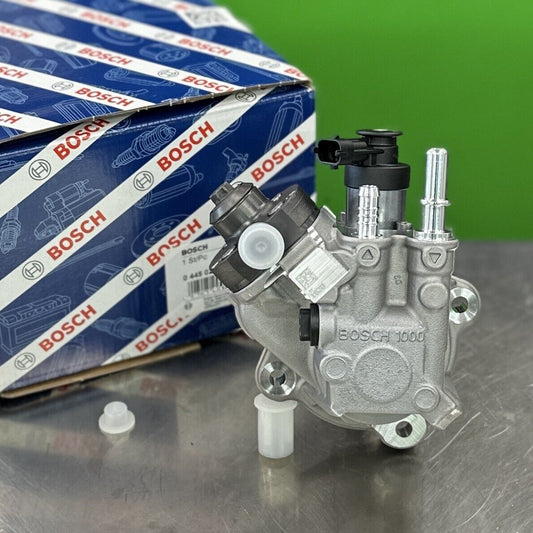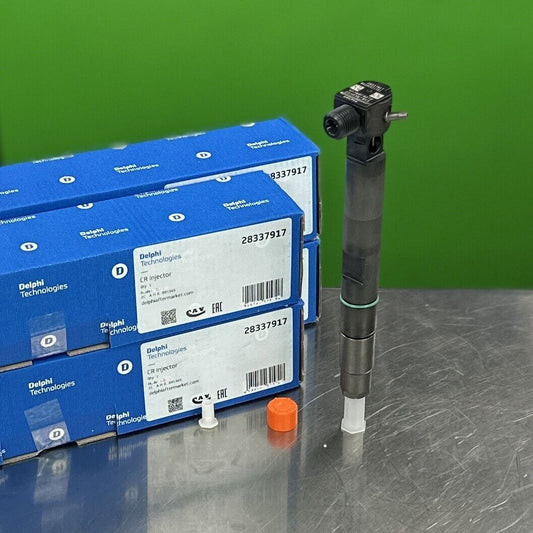Breaking Down the Components of the DD15 Fuel Pump
When it comes to the intricate world of diesel engines, the DD15 fuel pump stands out as a crucial component that keeps everything running smoothly. Picture it as the heart of the engine, pumping fuel to all the necessary parts with precision and efficiency. Let's dive into the inner workings of the DD15 fuel pump and unravel its key components that make it a powerhouse in modern diesel technology.
Overview of the DD15 Fuel Pump
The DD15 fuel pump is a vital component of modern diesel engines, playing a crucial role in the efficient functioning of the vehicle. This sophisticated pump is responsible for delivering fuel to the engine at the correct pressure and timing, ensuring optimal performance and fuel efficiency. Without a properly functioning fuel pump, the engine would not be able to generate the power needed to propel the vehicle forward.
Imagine the fuel pump as the heart of the engine, pumping fuel throughout the system like blood circulating in the body. Just as the heart needs to function effectively to keep the body alive, the DD15 fuel pump must operate efficiently to keep the engine running smoothly. Any disruptions or malfunctions in the fuel pump can lead to a decrease in engine performance, potentially causing the vehicle to come to a halt unexpectedly.
The DD15 fuel pump is designed with precision engineering to meet the demands of modern diesel engines, ensuring that fuel is delivered accurately and efficiently to support combustion. This component works in harmony with other engine parts to ensure that the vehicle operates at its best, providing power and reliability on the road.
Understanding the importance of the DD15 fuel pump is crucial for vehicle owners and mechanics alike. By recognizing its role in the engine system, individuals can appreciate the significance of proper maintenance and care to prolong the lifespan of the fuel pump and prevent unexpected breakdowns. With regular maintenance and attention, the DD15 fuel pump can continue to function effectively, supporting the performance of the diesel engine for years to come.
Main Parts of the DD15 Fuel Pump
When it comes to the DD15 fuel pump, understanding the main parts that make up this crucial component is essential for ensuring optimal engine performance. Let's dive into the key elements that constitute the DD15 fuel pump system:
- High-Pressure Pump: At the heart of the DD15 fuel pump is the high-pressure pump, responsible for delivering fuel at the required pressure levels to the engine. This component plays a vital role in maintaining the efficiency and power output of the diesel engine.
- Injector System: Another integral part of the DD15 fuel pump is the injector system. This system is responsible for precisely delivering the fuel into the combustion chamber at the right moment and in the right amount. The efficiency and accuracy of the injector system directly impact the overall performance of the engine.
- Control Module: The control module is a sophisticated electronic component that regulates the operation of the DD15 fuel pump. It ensures that the fuel delivery process is optimized for maximum efficiency and performance. The control module plays a critical role in monitoring and adjusting various parameters to meet the engine's requirements.
Each of these main parts of the DD15 fuel pump plays a crucial role in the overall functioning of the diesel engine. Without proper maintenance and attention to these components, the performance and longevity of the fuel pump can be compromised. By understanding the importance of these parts and following recommended maintenance guidelines, you can ensure that your DD15 fuel pump operates at peak efficiency, providing reliable power for your vehicle.
High-Pressure Pump
The high-pressure pump is a crucial component of the DD15 fuel pump system, responsible for delivering the necessary fuel pressure to the injectors for optimal engine performance. This pump operates at high pressures to ensure efficient fuel delivery and combustion within the engine.
One of the key functions of the high-pressure pump is to pressurize the fuel before it is sent to the injector system. By generating high pressure, the pump ensures that the fuel is atomized properly, resulting in better combustion and improved engine efficiency.
Within the high-pressure pump, there are intricate components such as pistons, cylinders, and valves that work together to create the required pressure levels. These components must be well-maintained to prevent any disruptions in fuel delivery and maintain the overall performance of the engine.
Regular inspection and maintenance of the high-pressure pump are essential to prevent issues such as fuel leaks, loss of pressure, or pump failure. By following the manufacturer's guidelines for maintenance, you can ensure that the pump operates smoothly and efficiently, contributing to the longevity of the engine.
In cases where the high-pressure pump shows signs of wear or malfunction, it is crucial to address the issue promptly to avoid further damage to the engine. Timely repairs or replacements of faulty components can prevent costly repairs and downtime, keeping your diesel engine running smoothly.
Injector System
The plays a crucial role in the operation of the DD15 fuel pump, acting as the gateway for delivering fuel into the combustion chamber with precision and efficiency. Imagine the injector system as a skilled marksman, carefully aiming and releasing the right amount of fuel at the exact moment to ignite the engine's performance. This system consists of a series of intricate components that work together seamlessly to ensure optimal fuel delivery and combustion.
At the heart of the injector system is the injector nozzle, a tiny yet powerful component responsible for spraying the fuel into the combustion chamber at high pressure. This nozzle must operate flawlessly to maintain the engine's performance and fuel efficiency. Additionally, the injector solenoid controls the opening and closing of the injector nozzle, regulating the fuel flow with precision.
The fuel rail acts as a conduit, delivering the pressurized fuel from the high-pressure pump to the injector nozzles. It ensures a consistent flow of fuel to each injector, optimizing the combustion process. Furthermore, the injector body houses the injector nozzle and solenoid, providing protection and support for these critical components.
Proper maintenance of the injector system is essential to ensure the longevity and performance of the DD15 fuel pump. Regular inspections, cleaning, and testing of the injectors can help prevent issues such as clogging or misfiring, which can lead to engine inefficiency and damage. By following recommended maintenance guidelines, you can keep the injector system operating at peak performance, ensuring your diesel engine runs smoothly and efficiently.
Maintenance Tips for the DD15 Fuel Pump
When it comes to maintaining the DD15 fuel pump, there are several key tips to keep in mind to ensure optimal performance and longevity. Let's dive into some essential maintenance guidelines:
Regular Inspections: It is crucial to regularly inspect the DD15 fuel pump for any signs of wear or damage. This includes checking for leaks, unusual noises, or changes in engine performance that could indicate a problem with the fuel pump.
Proper Fuel Quality: Using high-quality fuel is essential for the proper functioning of the DD15 fuel pump. Contaminants in low-quality fuel can cause damage to the pump components, leading to potential issues and decreased efficiency.
Replace Fuel Filters: Regularly replacing the fuel filters is important to prevent debris and contaminants from reaching the fuel pump. Clogged filters can restrict fuel flow and put additional strain on the pump, affecting its performance.
Follow Manufacturer's Guidelines: Adhering to the manufacturer's recommended maintenance schedule is crucial for the DD15 fuel pump. Following the guidelines for service intervals and component replacements can help prevent unexpected breakdowns.
Monitor Fuel Pressure: Keeping an eye on the fuel pressure is vital to ensure the DD15 fuel pump is operating within the correct parameters. Any fluctuations in fuel pressure could indicate a potential issue that needs to be addressed promptly.
Professional Servicing: For complex maintenance tasks or repairs, it is advisable to seek the expertise of a professional mechanic or service center familiar with DD15 fuel pump systems. They can provide thorough inspections and precise repairs when needed.
Keep Records: Maintaining detailed records of maintenance and repairs done on the DD15 fuel pump can help track its performance over time. This information can be valuable for diagnosing any recurring issues and planning future maintenance tasks.
By following these maintenance tips diligently, you can ensure that your DD15 fuel pump operates efficiently and remains in top condition for optimal engine performance.
Frequently Asked Questions
-
What is the function of the DD15 fuel pump?
The DD15 fuel pump is responsible for delivering the precise amount of fuel to the engine at the right pressure and time, ensuring optimal combustion and engine performance.
-
How often should the DD15 fuel pump be maintained?
It is recommended to follow the manufacturer's maintenance schedule, which usually includes regular inspections, filter replacements, and fuel system cleaning to keep the fuel pump operating efficiently.
-
What are the common signs of a failing DD15 fuel pump?
Some common indicators of a failing fuel pump include engine misfires, loss of power, increased fuel consumption, rough idling, and difficulty starting the engine.
-
Can I replace the DD15 fuel pump on my own?
While it is possible to replace the fuel pump yourself, it is recommended to seek professional help to ensure proper installation and avoid any potential damage to the engine.
-
How long does a DD15 fuel pump typically last?
The lifespan of a DD15 fuel pump can vary depending on usage and maintenance, but with proper care, it can last for several years before needing replacement.



